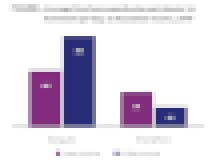Common Sense is weighing in on kids’ use of media in a detailed new report this week. But the takeaways for educators and the edtech industry are most obvious in the sections on homework.
The report, “The Common Sense Census: Media Use by Tweens and Teens,” updates a 2015 study by the same name from the nonprofit organization. Its primary focus is media used for entertainment. So there’s a rich data set on everything from playing games to reading for pleasure, based on a nationally representative survey of nearly 1,700 U.S. kids ages 8-18 that was conducted in March and early April of this year. Kids were placed into two groups: tweens 8-12 years old, and teens 13-18 years old.
The topline results carry a few surprises. The total amount of screen media time, not including screen time for school or homework, has remained relatively steady between 2015 and 2019 for tweens and is only slightly up for teens. Average daily time spent on social media is also steady over the four years, at a bit over an hour for teens and about one-sixth that for tweens.
Online video viewing is way up while traditional TV watching is down. But if you think all of those tweens are flocking to YouTube Kids as part of this shift, you’d be mistaken. Only 23 percent of them report watching YouTube Kids. A much larger 76 percent report viewing regular YouTube, which is supposed to be restricted to those 13 and older.
Video viewing is also up for homework assignments. Diving into a few homework-specific stats:
- Substantially more teens and tweens are using computers for homework every day. Over the past four years teens reporting daily use went from 29 percent to 59 percent, and tweens’ daily use increased from 11 percent to 27 percent.
- Time spent doing digital homework is rising, too. Teens spend an average of 41 minutes each day doing homework on computers, and tweens spend 15 minutes. That’s up 12 minutes for teens and 7 minutes for tweens since 2015.
- However, family income is a factor in even having a computer around for homework. Across the entire age 8-18 survey group, kids from higher-income families ($100,000 or more) are far more likely than their lower-income counterparts ($35,000 or less) to have a computer at home. The likelihood of having any home computer, desktop or laptop is 94 percent for higher income vs. 73 percent for lower income.
- Personal laptops are also more prevalent in higher-income homes. Among teens, 54 percent in higher-income families have a personal laptop compared with 36 percent in lower-income homes.
- Computer ownership gaps based on income have narrowed since 2015, but there’s still a disparity in how much homework gets done on computers. Lower-income teens are less likely (51 percent) than higher-income teens (64 percent) to use a computer for homework every day, and on average lower-income teens spend less time than higher-income teens using computers for homework (34 vs. 55 minutes per day) and more time using smartphones to get assignments done (21 vs. 12 minutes per day).

If some of these results sound vaguely familiar, it may be because they appear to reinforce an earlier Common Sense report based on a 2018 survey of teachers. It found that students in lower-income area schools were less likely to be assigned homework requiring digital tools, possibly due to a lack of high-speed broadband or devices in students’ homes.
Finally, fans of the bright and shiny may want to note the inclusion of two newer technologies in the 2019 media report that weren’t in the 2015 version—smart speakers and virtual reality. Some 45 percent of teens and tweens have ever used a smart speaker, which puts it relatively low on the list of eleven activities.
But not as low as virtual reality. VR came in dead last, having ever been used by only 22 percent of tweens and 27 percent of teens.


